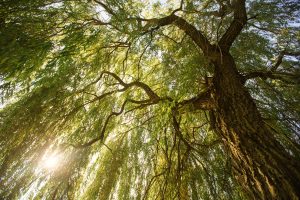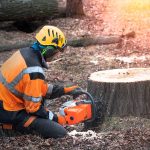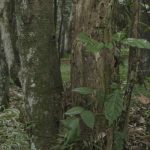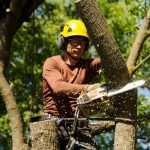There are some trees that don’t just add aesthetic value to your garden, they can also be a helpful asset in other ways. On the other hand, there are certain trees that can be hard to manage – and those include trees with invasive roots.
What’s Wrong With Invasive Roots?
When the roots of a tree are invasive, they turn into a liability for property owners. Here are some of the issues invasive roots can cause:
- They can create an uneven surface and pose a safety hazard
- They can infiltrate drainage networks and pipes (including septic lines)
- They can buckle and warp footpaths, paving, and driveways
- They can shift retaining walls
- They can lift and destabilise the foundation of a building
- They make it difficult to cultivate the ground around the trees
- They can emigrate to nearby properties and cause damage there
- They can be expensive to remove
Invasive Tree Roots – The Warning Signs
As you can see, invasive tree roots can cause a high degree of damage to the internal and external structures that surround a home. If you have a tree with invasive roots, you can tell that it’s doing damage to your paving and driveway if you see:
- Cracks in the tile or in the concrete
- Bumps or exposed roots in the general area
- The tiling or concrete surfaces buckling
Regarding the drains of your home, you know invasive tree roots are causing damage if you notice:
- Clogged drains
- Slow-flowing drains
- A change in water pressure
If invasive tree roots are causing damage to foundation, you’ll notice:
- Cracks in the foundational flooring
- Vertical cracks running along foundational walls
- Uneven windows/door frames
- The floor surfaces buckling
- Shattered/cracked windows
If you notice any of these effects taking place, it may be necessary to call in our tree removal services, and after that, our stump grinding services.
What Trees Have Invasive Roots?
There are certain species of trees that should be avoided in order to avoid the structural damage that their invasive roots can cause.
Here is the list of 11 trees with invasive roots in Australia:
1. Camphor Laurel
Camphor laurels can grow up to 20 metres tall, and they have a large canopy and a short, stout trunk. They typically grow in areas that see a lot of rainfall, but in a wide range of soil types.
These types of trees don’t have many natural predators or fall victim to any serious diseases, and they produce seeds quickly. In south-eastern Queensland and New South Wales, this tree is considered a significant environmental weed.
The camphor laurel is self-propagating and grows extremely quickly, and because of this, its root system is notorious for damaging sewer pipes.
2. White Poplar
Poplars are deciduous trees that can grow up to 20 metres in height, and they have a white/grey trunk with smooth bark. They’re typically planted as ornamental trees, and they love deep moisture and their roots will typically stretch out for long distances in order to find water sources.
They are known for blocking pipes, lifting up paving, and causing damage to foundations.
3. Evergreen Figs 
Evergreen figs, also known as ficuses, are pruned to have a ball at the top and grown as decoration in ornamental pots. But if they’re grown in a garden, they can be problematic. The root systems of these trees are strong and aggressive, and they can cause damage to paving, sewerage pipes, retaining walls, and even foundations.
Even when these trees are grown in pots, the roots are capable of escape. If the pot is not elevated, the roots might just grow out of the drainage holes of the pot and find soil to invade.
4. Evergreen Alders
These are trees that can grow to incredibly large sizes, so they are not suitable for your typical backyard. These roots are strong enough to lift fences, break pipes, and buckle paving. Their canopies can spread across multiple yards and block sunlight, all the while the roots use up all available space in the soil. In New South Wales, these trees are not permitted to be grown in backyards.
5. Pride of Bolivia
The Pride of Bolivia is a deciduous tree that is known for how fast it grows. It gets up to ten metres tall and is adaptable to most any environment. It can be recognized by its vibrant yellow/orange flowers and reddish/brown bark.
While this tree is nice to look at, its root system is aggressive enough to lift driveways, damage foundations, and damage retaining walls. In many parts of Queensland, it is considered a harmful weed.
6. Palms
When palm trees are young, they can create a backyard that gives off tropical vibes. But as palms grow, their expanding root systems have the strength to lift pavers and damage retaining walls.
 7. Eucalyptus Trees
7. Eucalyptus Trees
Eucalyptus trees, also known as gum trees, can vary in height, shape, and colour, but all shapes and sizes are problematic for planting near your home. They have aggressive root systems that reach far and wide to cause foundational damage to homes.
8. Liquidambar
Liquidambar trees are known for how fast they grow and how big they are. They can get up to 25 metres high and 12 metres wide. They are conical trees with fine-toothed leaves that range in colour from orange to red to purple.
But even though these trees are easy on the eyes, they have aggressive root systems that can clog stormwater pipes – so they do best when planted in parks and larger gardens.
9. Silver Maple
Silver maples are attractive trees that grow quickly in the shade and can get up to 12 metres tall. Their leaves have a distinct silver underside, and in autumn they can be anywhere from greenish brown to greenish yellow.
But these roots are some of the most invasive out there. As they grow, they can crack pavement, driveways, pipes, and foundations. They do well when planted in parks, gardens, and private properties.
10. Southern Magnolia
The Southern magnolia is a beautiful tree that forms a dome shape with glossy green leaves. Their cup-shaped flowers are white and appear in spring and summer, and their beauty is what attracts people to this tree.
This tree can grow quite large, and many are too big for a typical garden. They have knotted root systems that spread wildly and cause structural damage, crowd under-soil space, and leave no room for other plants to grow.
11. Willow Tree
Willows are deciduous trees that have long, narrow leaves and flower stalks decorated with tons of tiny flowers. But their large and aggressive root systems can spread up to 40 metres and cause extensive damage to drains, roads, and pavements. They are considered a harmful weed in Victoria and New South Wales.
How To Control Invasive Roots
If you’re concerned about structural damage to your property or the properties surrounding yours, the best route to take is choosing a tree with the least invasive roots – so, nothing from this list.
You can be sure of the presence of invasive roots by digging close to the trees in question and checking to see if the roots extend and begin to grow downwards. If these roots are severely impacting your property, they will need to be removed professionally by experts like us at A-Local Tree Service.

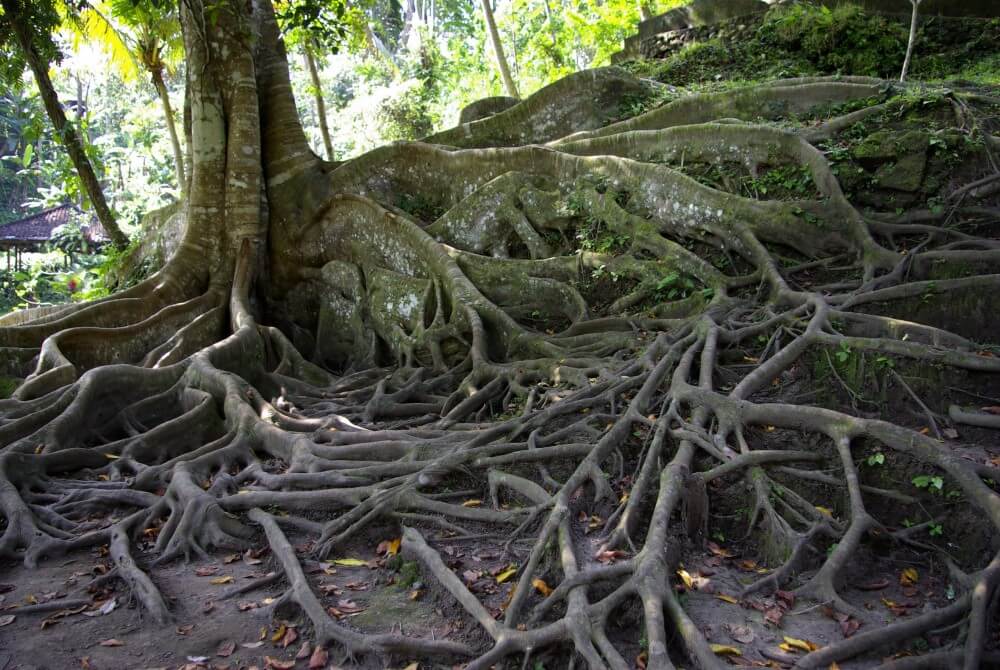
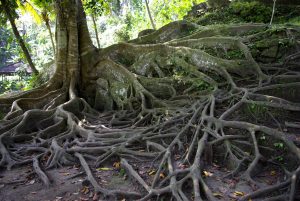
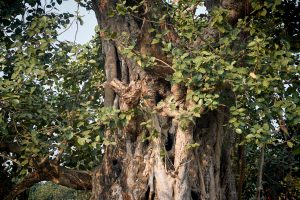
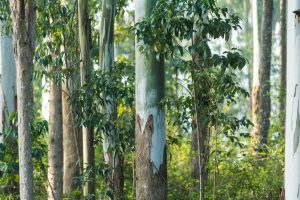 7. Eucalyptus Trees
7. Eucalyptus Trees